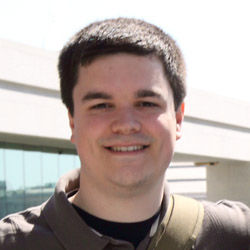
In Part 1 and Part 2, I described the prelaunch strategy and launch-day experiences of Georgia Tech Research Institute’s (GTRI’s) I Spy A Red Balloon team, which competed in the DARPA Network Challenge.
DARPA’s press release on the challenge’s winner went live at about 8pm on December 5th: MIT had found all 10 balloons in just under nine hours. An included map showed the correct locations for the 10 balloons, revealing that the GTRI team had correctly located nine of the balloons. To our knowledge, the balloon in Katy, TX, simply never appeared on our radar, and though we were an unofficial runnerup, we were very pleased with our performance.
About 1,400 people had explicitly joined our team, and while I imagine that number is large compared to most other teams, our team’s eyes covered a tiny fraction of the United States’ geographic space. As a result, most of our tips came from people who discovered our team after finding a balloon, chatting with the nearby DARPA representative, and later searching for teams on Google. Our high Google ranking for queries such as "DARPA red balloon" was quite valuable.
On launch day we had spoken directly with several balloon spotters on the phone and quickly found direct voice conversation to be an easy way to verify a report. The people who called us were happy to have a conversation about his or her experience and give us any requested details. As we learned the true balloon positions, it was clear that we never spoke directly with a person who was trying to give us false information. It is somewhat disappointing that we never determined if we could recognize deception as such. Indeed, deceptive reporters were probably not interested in subjecting themselves to direct scrutiny!
Trust within our team’s network was a tricky issue. We knew that members of other teams were monitoring our Facebook discussions (as we were theirs), so it was important that critical information not be leaked to the public. In effect, this resulted in a one-way communication channel between the team leadership (the seven trusted GTRI employees) and the rest of the team members. The team could give us tips, but we were unable to query the team about potential balloon sightings in order to confirm or refute them since that information was so valuable. On the other hand, the seven GTRI employees present in the war room each knew the full details of every incoming balloon tip and were able to act on that knowledge.
Thus, another potential team-building paradigm might have been more effective: build a trusted, invite-only team in which all incoming balloon details are broadcast to the entire team, allowing each member to perform forensics. Even better, build this team to complement the larger, public untrusted network.
A few weeks after the competition’s completion, we were pleased to meet Peter Lee, the director of DARPA’s Transformational Convergence Technology Office (TCTO), the office that created the Network Challenge. He mentioned that DARPA had originally discussed having teams find individual DARPA employees hidden among the general population, but concerns about privacy and appearance led to the use of balloons instead. It was also surprising to Lee and the others that fewer established networks participated as a group. The Geocachers were a notable exception, but it was expected that other groups, such as the Boy Scouts of America, would have made excellent competitors. DARPA had intentionally underpublicized the competition as a way of testing teams, and it is likely that those groups are simply not aligned with the sorts of publications that carry DARPA-related news.
All in all, the competition was a great experience, and the GTRI team is proud to have participated. I would personally like to thank my fellow team leaders and those who helped in the war room on Saturday, fueled by donuts, pizza, and adrenaline: Erica Briscoe, Stephen Cuzzort, Jessica Pater, Rick Presley, Miles Thompson, and Betty Whitaker.



Join the Discussion (0)
Become a Member or Sign In to Post a Comment